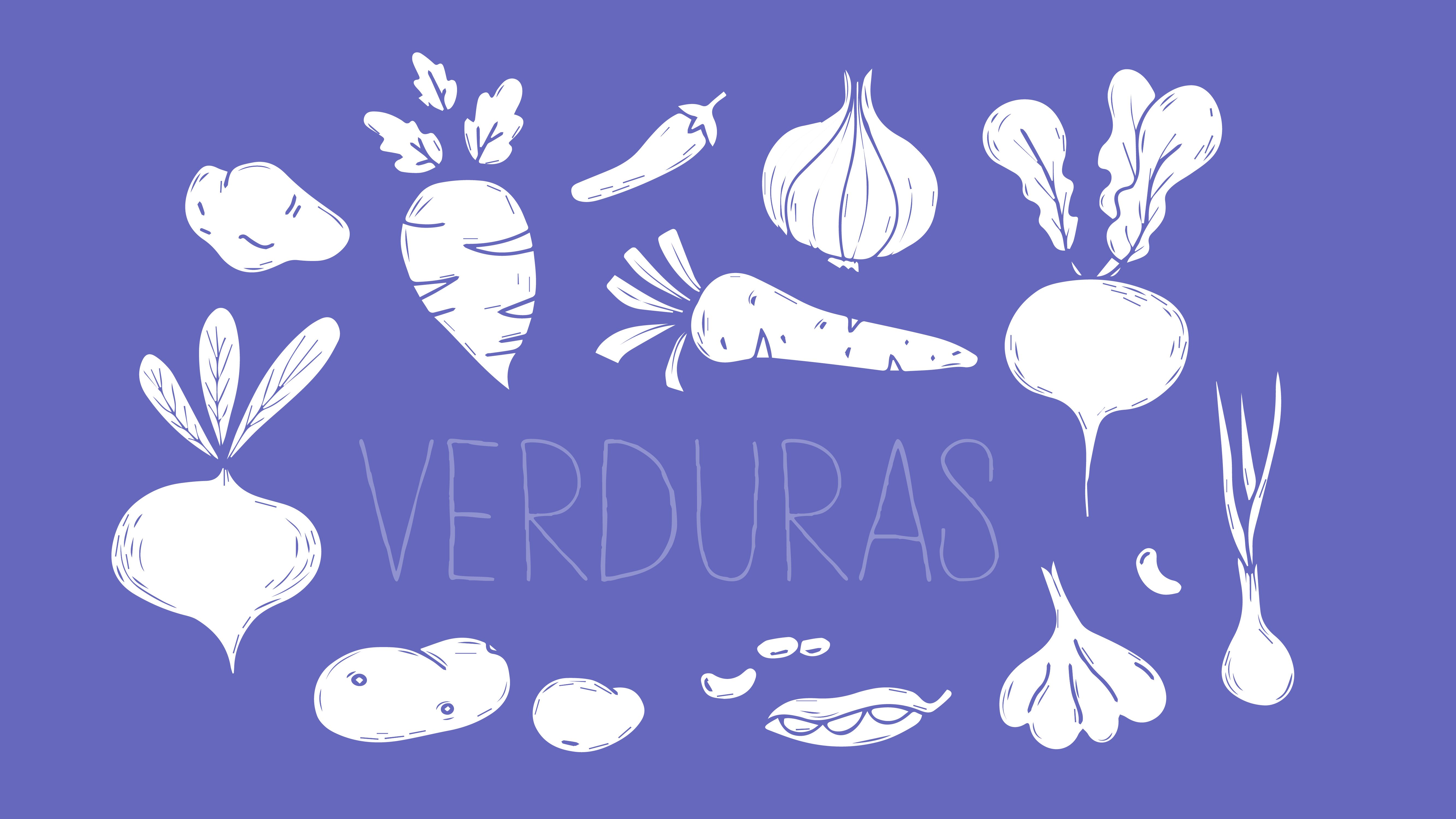
Embarking on a journey to learn Spanish? Congratulations! You're about to dive into a rich language that's spoken by over 460 million people worldwide. Part of learning a new language involves familiarizing yourself with everyday topics, and what’s more everyday than food? Specifically, let's explore the realm of verduras, or vegetables, in Spanish.
Whether you're navigating through a bustling mercado (market) in Madrid or trying to prepare a traditional Spanish recipe at home, knowing the names of vegetables in Spanish can be quite handy.
In this guide, we will help you learn not just the names, but also a few fun facts about each verdura. For example, did you know that zanahoria (carrot) in Spanish comes from the Arabic word safunnárya?
So, put on your learning hats, and let's embark on this gastronomic adventure!
Learn Spanish with Langster
Why Should You Learn the Names of Vegetables in Spanish?
Learning the names of vegetables in Spanish is not just about expanding your vocabulary; it's also about immersing yourself in the culture. Food is a significant part of any culture, and understanding its language opens doors to deeper connections and authentic experiences.
Being able to name vegetables in Spanish can transform a simple market visit into a cultural exchange, enable you to navigate Spanish menus with ease, and even help in understanding regional dialects and variations.
It's a small step in language learning that brings you significantly closer to a rich, vibrant world of Spanish-speaking communities.
Vegetables that Grow Underground: Verduras from Under the Earth
Exploring the world of vegetables, you'll find an interesting category that thrives beneath the surface of the soil, often referred to as root vegetables. These verduras are not only common in Spanish cuisine but are also packed with nutrients.
Indeed, the importance of knowing the names of various vegetables in Spanish cannot be overstated. It’s more than just adding a set of words to your vocabulary — it's about enriching your language learning experience by diving into an everyday aspect of life in a Spanish-speaking country.
Understanding the language of food, particularly verduras (vegetables), can create delightful cultural interactions and serve as an icebreaker in social situations. Ordering food at a restaurant, shopping for groceries at a local market, or even reading a Spanish recipe becomes significantly easier with this knowledge.
Furthermore, it offers you a unique perspective on the rich variety and regional differences in Spanish cuisine, as the food we consume is a reflection of the geography, climate, and culture we live in.
Thus, learning vegetable names in Spanish becomes a gateway not only to the language itself but also to a broader understanding and appreciation of the Spanish-speaking world.

Now, let's delve into Spanish root vegetables and have a look at some examples:
Spanish
English
Las verduras
Vegetables
La patata
Potato
La cebolla
Onion
La zanahoria
Carrots
La remolacha
Beet
El puerro
Leek
El ajo
Garlic
El jengibre
Ginger
La batata
Sweet Potato
La chirivía
Parsnip
El apio
Celery
Remember, each of these is just an example of a Spanish root vegetable. There's a lot more to explore in the fascinating world of verduras.
Leafy Greens: Verduras de Hoja Verde
A remarkable variety of leafy green vegetables, or verduras de hoja verde, play a big role in Spanish cuisine.
These vegetables are not only a vibrant addition to any dish but are also loaded with vitamins, fiber, and other essential nutrients. Let's take a look at these fresh vegetables in Spanish:
Spanish
English
Las verduras de hoja verde
Leafy green vegetables
La lechuga
Lettuce
La espinaca
Spinach
La col
Cabbage
La acelga
Swiss Chard
La berza
Kale
La rúcula
Arugula
El perejil
Parsley
La albahaca
Basil
La menta
Mint
El cilantro
Cilantro
El romero
Rosemary
Cruciferous Vegetables

Cruciferous vegetables, or verduras crucíferas, are another category of vegetables that are integral to Spanish-speaking countries. These veggies, known for their multiple health benefits, including cancer prevention, bring a rich and diverse taste to Spanish dishes.
Let's explore the Spanish names for these food items:
Spanish
English
Las verduras crucíferas
Cruciferous vegetables
El brócoli
Broccoli
El coliflor
Cauliflower
Las coles de Bruselas
Brussels Sprouts
El repollo
Cabbage
El nabo
Turnip
El rábano
Radish
Remember, these are just a few examples of the verduras crucíferas that you might encounter in Spanish-speaking regions. In addition to enhancing your culinary understanding, knowledge of these vegetable names in Spanish can further enrich your language learning journey.
"Vegetables" that are Actually Fruits
Now, let's delve into a peculiar category of "vegetables" that are technically fresh fruits. Yes, you read it correctly! From a scientific and botanical perspective, some of the items we commonly refer to as vegetables are actually fruits. This is because they contain the seeds of the plant and develop from a flower.
You won't find la manzana (apple) or el mango (mango) on this list, but here are a few popular examples in Latin America of these fruits and vegetables include:
Spanish
English
El tomate
Tomato
El pimiento
Pepper
La berenjena
Eggplant
El calabacín
Zucchini
El pepino
Cucumber
La aceituna
Olive
El aguacate
Avocado
La calabaza
Pumpkin
Remember, while these fruits are typically treated as vegetables in the culinary world, knowing their botanical classification can add an extra layer of interest to your Spanish learning journey. It's evidence of the fascinating interplay between language, science, and culture that persists in our everyday lives.
Tips to Expand Your Vegetable Vocabulary in Spanish

Mastering a foreign language is a journey that requires a multi-faceted learning approach. Here, we provide you with some tips to learn more vegetable names and boost your Spanish vocabulary.
1. Regular Practice
Regular practice is key to mastering any language. Dedicate a specific amount of time daily to learning new vegetable names in Spanish. Start with a few names each day and gradually increase the list as you gain confidence.
2. Use of Flashcards
Flashcards can be a powerful tool for vocabulary expansion. Write the Spanish names of vegetables on one side of the flashcard and their English translations on the other. Review these flashcards regularly, ideally every day, until you feel comfortable with the vocabulary.
3. Engage in Conversations
Engage in conversations with native Spanish speakers or fellow learners, discussing various topics that incorporate vegetable vocabulary. It could be about your favorite dishes, market experiences, or cooking techniques. Speaking is crucial in language acquisition, and it allows you to use the new vocabulary in context.
4. Learning in Context
Learn new vocabulary in context, not in isolation. For instance, if you've learned tomate (tomato), you can use it in a sentence like Me gusta la salsa de tomate (I like tomato sauce). This reinforces the meaning and usage of the new word.
5. Cook Spanish Dishes
One fun and practical way to learn more vegetable names in Spanish is by cooking Spanish dishes. Pick a recipe that includes a variety of ingredients and follow the instructions in Spanish. Not only will this familiarize you with the names of the vegetables, but it will also help you understand their use in Spanish cuisine.
6. Use Bilingual Dictionaries or Translation Apps
Bilingual dictionaries or translation apps can be handy tools for learning new words and phrases. Just don't rely solely on them – they're more effective when used alongside other strategies.
7. Visit Local Spanish Markets
If possible, visit local markets in Spanish-speaking areas. It's a great opportunity to familiarize yourself with a wide variety of vegetables and other produce, and you can practice your Spanish with the local vendors.
8. Watch Cooking Shows or Videos in Spanish
Watching cooking shows or videos in Spanish enables you to hear the pronunciation of vegetable names, learn their context, and get familiar with colloquial speech. Many of these shows feature dishes that incorporate a variety of vegetables.
9. Read Spanish Recipes or Food Blogs
Reading recipes or food blogs in Spanish can expose you to a broad range of vegetable names. The diverse ingredients, coupled with vivid descriptions of the dishes, offer a rich learning resource.
10. Use Language Learning Apps
Language learning apps like Duolingo, Babbel, or Rosetta Stone can be useful tools in vocabulary building. Many of these apps have specific sections dedicated to food and cooking, which can help you learn the names of vegetables.
Remember, learning a new language is a marathon, not a sprint. It's okay to take your time and learn at your own pace. The aim is to make learning an enjoyable process.
So, explore these tips, and adopt the strategies that suit your learning style best. With persistence and dedication, you'll be impressing your friends with your expansive Spanish vegetable vocabulary in no time.
The Bottom Line

In conclusion, expanding your vegetable vocabulary in Spanish is not only a fun and interesting aspect of language learning, but it also opens the door to a rich culinary culture. It allows you to engage more deeply with Spanish-speaking communities, whether you're ordering at a local restaurant, shopping at a market, or cooking up a Spanish feast at home.
Remember, constant practice, immersive experiences, and utilizing effective learning tools and strategies are key to mastering this new vocabulary. To aid you in your language-learning adventure, we invite you to download our language-learning app, Langster.
With Langster, you can learn at your own pace, practice with engaging games, and even connect with native speakers. So, why wait? Start expanding your Spanish vocabulary today with Langster. Your Spanish language journey awaits!
Learn Spanish with Langster









